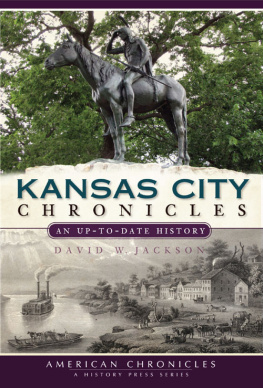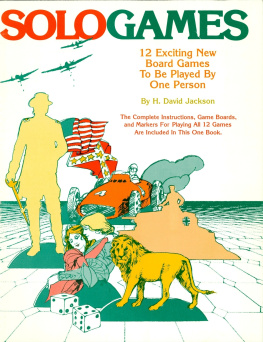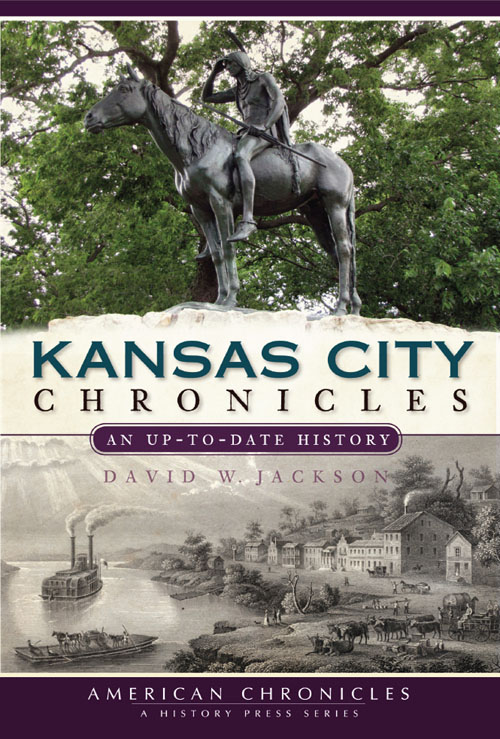KANSAS CITY
CHRONICLES


Published by The History Press
Charleston, SC 29403
www.historypress.net
Copyright 2010 by David W. Jackson
All rights reserved
First published 2010
e-book edition 2011
ISBN 978.1.61423.202.5
Library of Congress Cataloging-in-Publication Data
Jackson, David W., 1969
Kansas City chronicles : an up-to-date history / David Jackson.
p. cm.
Includes index.
print edition ISBN 978-1-59629-986-3
1. Kansas City (Mo.)--History. 2. Kansas City (Mo.)--Biography. 3. Kansas City (Mo.)--Social life and customs. 4. Historic buildings--Missouri--Kansas City. 5. Kansas City (Mo.)--Buildings, structures, etc. 6. Kansas City Region (Mo.)--History. 7. Jackson County (Mo.)--History. 8. Jackson County (Mo.)--History, Local. 9. Historic buildings--Missouri--Jackson County. I. Title.
F474.K257J33 2010
977.8411--dc22
2010019854
Notice: The information in this book is true and complete to the best of our knowledge. It is offered without guarantee on the part of the author or The History Press. The author and The History Press disclaim all liability in connection with the use of this book.
All rights reserved. No part of this book may be reproduced or transmitted in any form whatsoever without prior written permission from the publisher except in the case of brief quotations embodied in critical articles and reviews.
I NTRODUCTION
Pulitzer Prizewinning historian and author David McCullough said of Jackson County (which encompasses Kansas City south of the Missouri River), I cant think of another piece of landscape of similar size where so many things have happened that have been of significance in the story of America. This is a small selection of stories relaying some of the highlights that make the Kansas City metropolitan areas heritage unique to American history.
To reinforce my position that much history transpires in less than one persons lifetime, the vignettes presented here are generally grouped in 50-year increments. They cover more than 175 years of local history and include the time before Jackson County was formed in 1826. Understanding that each of us helps to create history every day, these chronicles project through 2026, when Jackson County will celebrate its bicentennial.
Chapters from our past, present and future are made more vivid through firsthand, personal accounts. I wish more people had written about (this topic or that) at the time they experienced it, is a common lament among researchers, authors and historians. To try and provide such material, the Jackson County (Missouri) Historical Society collects through donation original, historical documents and photographs and dedicates resources for their long-term preservation so that they may be accessible to future generations.
Acknowledging the wealth of Kansas Cityarea history that is preserved and made available to the public, I invite youwherever you are as you read thisto support local history and heritage sites of your choice. Most are owned or operated by nonprofit organizations like the Jackson County Historical Society. Your financial contributions are the lifeblood of such organizations striving to uphold the worthy mission to preserve and promote your history. More information may be found at http://www.jchs.org.
David W. Jackson
Summer 2010
Kansas City, Missouri
B EFORE J ACKSON C OUNTY (1826)
A R IVER R UNS BY I T : K ANSAS C ITY S O RIGINS C ARRIED ON THE M ISSOURI R IVER C URRENT
Kansas City is a Missouri River town. Thats where this story begins. Before there were towns and cities, streets and highways, there was the rivera broad, winding ribbon past towering bluffs and wooded banks.
The Muddy Mo was a treacherous highway, fraught with snags and subject to floods. But, it was the route of all travel and commerce in those days. It was a course traveled for centuries by Native Americans and newcomers alike. The Missouri River guided travelers as far west as they could go by water passage through the early 1800s to an area that is now Kansas City in Jackson County, Missouri, the Heart of America.
European American trappers and tradersfirst Spanish, then Frenchtraveled along the river, learning its secrets from the Osage Indians who called this land home. In 1803, a massive expanse of land that today includes Jackson County became United States territory in the most advantageous real estate transaction in history, the Louisiana Purchase, which the United States purchased from France for roughly one dollar per acre.
The next year, U.S. president Thomas Jefferson enlisted Meriwether Lewis and William Clark to use the river route, a corridor into this vast interior, to mount an expedition to the Pacific. Jeffersons Corps of Discovery traveled up the Missouri River through a continent inhabited by communities of Native American people with traditions and cultures as old as millennia. Before Lewis and Clark reached the Pacific, their exploratory entourage encountered and was assisted by nearly fifty Native American tribes.
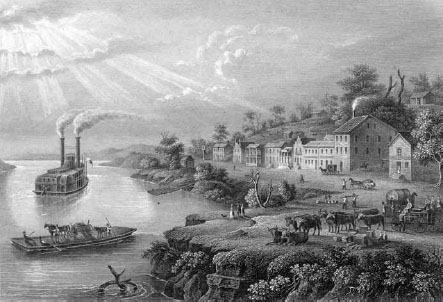
Earliest (circa 1848) view of Kansas Citys riverfront (formerly known as the Town of Kansas or Westport Landing) drawn by Hermann J. Meyer. A historical marker erected at the foot of Main Street in June 2010 commemorates this site north of the City Market in downtown. Courtesy Jackson County (Missouri) Historical Society 005131L.
The expedition arrived at present-day Kansas City around Independence Day in 1804, where they marked the first Fourth of July west of the Mississippi by firing the keelboats cannon and naming Independence Creek.
M AN I S A RRIVING , M AN I S A RRIVING , M AN I S A RRIVING
Looking on from the riverbank, the Native Americans began a new chapter to their oral tradition, a perspective captured in a libretto created for the bicentennial of the Lewis and Clark expedition. Celebrated classical music artist Rob Kapilow teamed with Blackfeet tribal member and innovative artist Darrell Robes Kipp to create Summer Sun, Winter Moon, reflecting the enduring legacy of this historical event. Its second stanza, Two hundred winters ago a new song was heard in the winter moons yelling across the rivers. Man is arriving Man is arriving Man is arriving, begins the conversation.
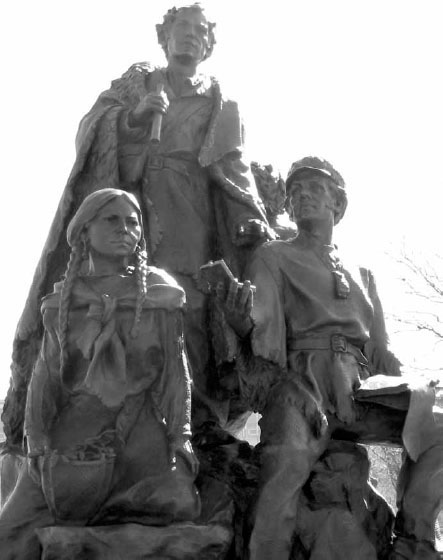
The Lewis and Clark statue at Clarks Point atop Quality Hill in downtown Kansas City. Also featured in this larger-than-life statue are Sacagawea (Native American guide), York (African American slave) and Seaman (the dog). Courtesy the author.
Today, a magnificent, larger-than-life statue overlooks breathtaking vantages at Clarks Point on Quality Hill, located at Eighth and Jefferson in downtown Kansas City.
In September 1808, Clark directed the construction of Fort Clark (later, Fort Osage). Four years previously, in June 1804, he had spotted the prominent point as the perfect location for a federal fortification on the westernmost frontier of the United States. There, a military garrison was established to oversee trade between the Native and European Americans. It was also where the Treaty of Fort Clark (also known as the Treaty with the Osage, or the Osage Treaty) was signed on November 10, 1808 (ratified on April 28, 1810). The Osage Nation ceded all the land east of the fort in Missouri and Arkansas north of the Arkansas River to the United States. Further Osage lands were ceded in a second treaty signed at St. Louis, Missouri, in 1818, and a third signed at Council Grove, Kansas, in 1825.

